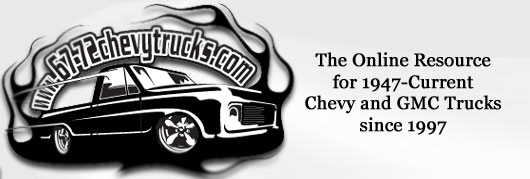
 |
Register or Log In To remove these advertisements. |
|
|
|
|||||||
 |
|
|
Thread Tools | Display Modes |
|
|
|
|
#1 |
|
Registered User
Join Date: Jan 2011
Location: Richmond, CA
Posts: 11
|
Re: Disc Brake Conversion Question
Yes, bench bleed the MC before installing. Filled to 1/4" below edge and bleed till the fluid was about half way down in each cylinder.
Brake pedal rod long enough? You mean rod coming out back of booster? Currently brake pedal is in its original position when completely out. Posted via Mobile Device |
|
|

|
|
|
#2 | |
|
Registered User
Join Date: Feb 2009
Location: southeasternfoothillsofusa
Posts: 1,557
|
Quote:
Last edited by luvbowties; 09-30-2012 at 04:14 PM. Reason: tmi |
|
|
|

|
|
|
#3 |
|
Registered User
Join Date: Jan 2011
Location: Richmond, CA
Posts: 11
|
Re: Disc Brake Conversion Question
No plug or spacer came with the kit (just plugs for brake line inlets for bench bleeding). Can't remember if hollow space was blunt or flat.
Can't tell if brakes are applied (sitting in garage), but does not feel like it. Posted via Mobile Device |
|
|

|
|
|
#4 | |
|
Registered User
Join Date: Feb 2009
Location: southeasternfoothillsofusa
Posts: 1,557
|
Quote:
Did your kit come with a single-outlet, single-line mc like what came on your truck originally? or did it come with a dual-outlet, dual-line mc like comes on '67 and newer, which requires you to re-plumb your system to accept the dual-brake system? |
|
|
|

|
|
|
#5 |
|
Registered User
Join Date: Feb 2009
Location: southeasternfoothillsofusa
Posts: 1,557
|
One more thing: By drilling a hole 1 inch lower than original hole for brake-rod, it gives the push-rod a longer throw, which means it pushes the push rod further into the booster. It GIVES you a 'mechanical advantage' of distance the rod travels and takes away the advantage you HAD of ease of pushing the rod--pedal becomes harder to push but it flows more brake fluid per pump of the pedal. The mfg of your system had a reason for directing you to drill that hole! But, our method might just suffice. Hope this makes sense.
|
|
|

|
|
|
#6 |
|
Registered User
Join Date: Jan 2011
Location: Richmond, CA
Posts: 11
|
Re: Disc Brake Conversion Question
luvbowties,
Thanks so much for all of the info. I just drilled a hole 1" lower on the brake pedal bar and unfortunately no diff. I think you might be on to something regarding my pedal not pushing completely into the MC. When I was bench bleeding the MC, at the end it got to the point where I could barely push the piston in, so I figured it was fully bled. I would assume if the booster rod was pushing into the MC I would encounter that same resistance, but like I sad it goes right to the floor very easily. I'm gonna call Early Classics as well to see if they know anything about a spacer. Like I said I'm pretty sure the piston I was pushing against was flat with no shape at all, but to bleed it I did have to stick a phillips in to the MC about 1" to contact the piston. One question. When the motor is running the pedal goes to the floor very easily, but when I turn off the motor there is a bit more resistance in the pedal. Any reason for that? Also this is a dual MC kit with dual front lines and proportioning valve. There is a thick (rear) line and a thin (front) line coming of the PV. Thick line goes to the rear and thin line breaks off to the calipers. Doesn't seem to be any leaks and I did bleed all wheels after I hooked up the MC. Thanks! Dan |
|
|

|
|
|
#7 | |
|
Registered User
Join Date: Feb 2009
Location: southeasternfoothillsofusa
Posts: 1,557
|
Quote:
I still think the little spacer is going to be the solution. I read about some 'Corvette-style' mc's last nite, & the site mentioned it included an 'adapter' for the different style mc. This site mentions the different mc's, the deep-hole and the shallow-hole. Don't see the site mentioning including the adapter right now(gotta go meet my walking buddies). >> http://www.tuffstuffperformance.com/...cat/cat210.htm << |
|
|
|

|
 |
| Bookmarks |
|
|